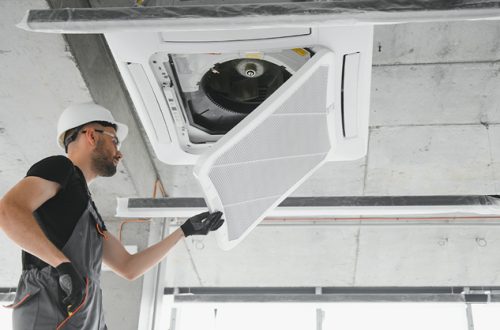Since the pandemic began, engineers and other experts have been calling for the government to address the airborne transmission of COVID-19, particularly in indoor settings where people gather for long periods of time, such as schools:
- Are Schools Safe to Return to Amid the COVID-19 Pandemic? – August 2020
- Engineers Call on Ontario to Refocus Efforts on the Airborne Transmission of COVID-19 – January 2021
- Ontario Engineers Urge Government to Address Air Quality Issues Before Students Return to School – February 2021
In a July 26, 2021 letter to Stephen Lecce, Ontario’s Education Minister, Jill Dunlop, Ontario’s Minister of Colleges and Universities, Christine Elliot, Ontario’s Minister of Health, and Ontario Premier Doug Ford, OSPE reiterated that with children preparing to return to classrooms, and post-secondary institutions on track to fully re-open without capacity limits of physical distancing requirements this fall, engineers know if we are going to combat the Delta variant, future variants, and a potential fourth wave, the need for proper ventilation and filtration of indoor air is paramount.
While investments like the Ontario Together Fund to develop new technologies are welcome, a transparent plan to prioritize and conduct assessments and upgrades to heating, ventilation and air conditioning (HVAC) systems in schools, colleges, universities, and other buildings where people gather indoors for long periods of time, is needed now.
OSPE is calling on the Ontario government to consult with engineers, scientists, HVAC specialists and other experts immediately to adequately address this issue before more outbreaks occur.
OSPE endorses the work of our colleagues at the American Society of Heating, Refrigerating and Air-Conditioning Engineers (ASHRAE), who have released extensive resources detailing how to conduct overall improvements to HVAC systems to properly mitigate virus transmission. ASHRAE’s Building Readiness Guide includes checklists for re-occupancy of schools, including a recommendation to “consider consulting with a local professional engineer to determine the appropriate minimum RH levels based on local climate conditions, type of construction and age of the building under consideration.”
The Centre for Disease Control and Prevention also references the ASHRAE guidelines, and outlines the following tools to improve ventilation in buildings to prevent the spread of COVID-19:
- Increase the introduction of outdoor air
- Use fans to increase the effectiveness of open windows
- Ensure ventilation systems operate properly and provide acceptable indoor air quality for the current occupancy level of each space
- Rebalance or adjust HVAC systems to increase total airflow to occupied spaces when possible
- Turn off any demand-control ventilation (DCV) controls that reduce air supply based on occupancy or temperature during occupied hours
- Improve central air filtration by increasing it, ensuring that filters are properly sized and within their recommended service life, and inspect filter housing racks
- Ensure restroom exhaust fans are functional and operating at full capacity when the building is occupied
- Use portable high-efficiency particulate air (HEPA) fan/filtration systems to enhance air cleaning
- Generate clean-to-less-clean air movement by evaluating and repositioning as necessary, the supply louvers, exhaust air grilles, and/or damper settings
- Use ultraviolet germicidal irradiation (UVGI)as a supplemental treatment to inactivate SARS-CoV-2 when options for increasing room ventilation and filtration are limited
- Run the HVAC system at maximum outside airflow for two hours before and after the building is occupied
Public Health Ontario’s Focus on Heating, Ventilation and Air Conditioning (HVAC) Systems in Buildings and COVID-19 report dated March 2021 should be updated to include the guidelines noted above.
Engineers know that air quality is bigger than COVID-19. Indoor Air Quality (AIQ) affects how many sick days Ontarians take off work, how happy we are, and how long we live. Ontario has the opportunity and technology to make the air in buildings where we live and work cleaner than the air outside, which is becoming more important as wildfires rage across the country. The cost of investment is small compared to the benefits we will reap in finance, health and wellness.
For more information on air quality and COVID-19, listen to OSPE’s Engineering the Future podcast episode Airborne Transmission of COVID-19 with engineer Dr. Brian Fleck, Ph.D., P.Eng., from the University of Alberta.





Comment (1)
Bravo! More leadership in one letter than we’ve had from the provincial government in the past three years.
Leave a Comment